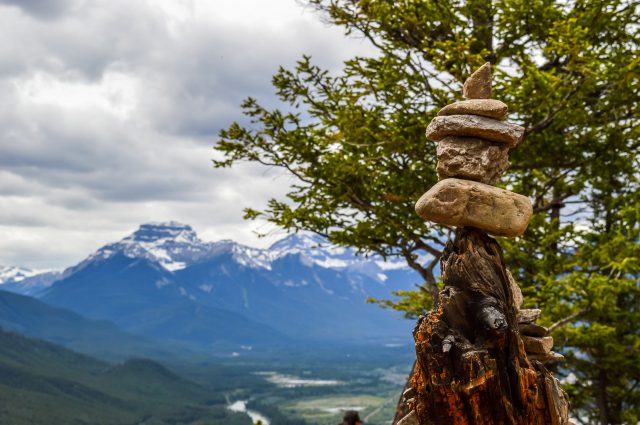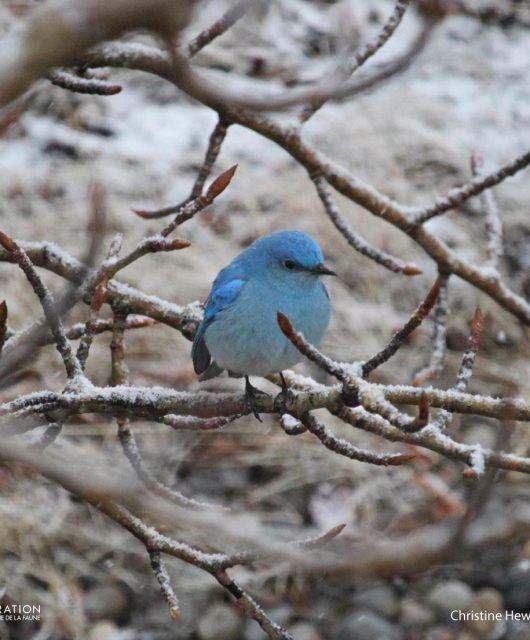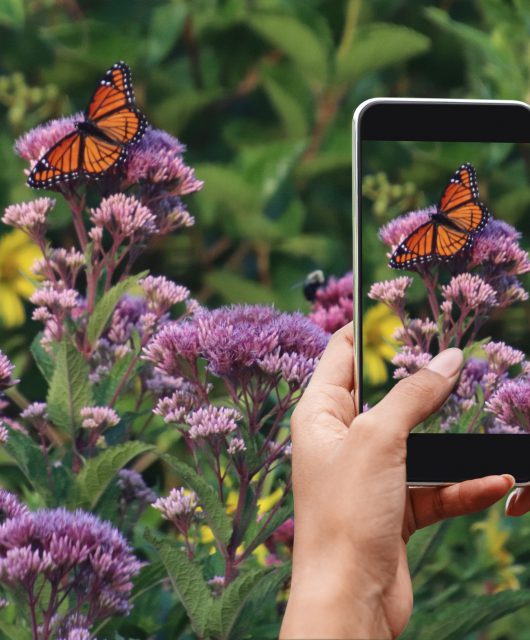There are Indigenous People across Canada.
The three main groups of Indigenous People are referred to as First Nation, Inuit and Métis. The diversity amongst each group includes unique language, culture, traditions and history. Although there is diversity amongst Indigenous groups, they also share similar teachings when it comes to learning from the land and protecting Mother Earth. As such, Indigenous perspectives of learning come from traditional teachings of all nations across Canada.
Indigenous Peoples believe that we are all connected and that we are all responsible for showing love, kindness and respect to all creation such as the land, plants, water and animals. Land-based learning is a way to discover and explore Indigenous culture and ways of life. It is derived from an Indigenous perspective which is a holistic way of learning: using all of our senses, being fully present and having a respectful mindset. This learning is enhanced when we balance all areas of our physical, mental, emotional and spiritual health. These aspects of ourselves can likewise be supported by participating in these sorts of activities.

Examples of a land-based activity with an Indigenous perspective can include:
- Going out in the nature to collect wild sage. Collecting sage occurs in the warmer months and there are protocols before picking. Laying down tobacco first before picking sage is a common protocol for taking anything from the land. We offer tobacco as a way of giving thanks for its medicinal purposes.
- Taking people out fishing and showing them how to prepare and cook their fish. Indigenous People have different species of fish and each Indigenous group has their own delicacy meals when it comes to traditional dishes. i.e. Indigenous groups on the west coast have salmon that can be smoked/dried.
- Observe how Indigenous Peoples tan hides. The process of tanning hides can take up to six weeks. Depending on time, they can partake in some of the steps. Storytelling usually occurs during every activity as well.
Indigenous People’s histories and knowledge have been passed down through oral stories and experiential learning. Kinship roles and relationships are an important aspect of Indigenous traditions. Indigenous People believe that we all take care of one another, especially Mother Earth, because the Earth provides everything we need to survive. Stories and talking circles are a traditional way to learn Indigenous tradition and values. They help people understand the world in a deeper sense and they help people to understand our roles and responsibilities within it. Talking circles are usually facilitated by an elder or a knowledge keeper as they enhance dialogue, discussions and promotes active listening. When an elder (a person who has this title bestowed upon them by their community) or knowledge keeper (a person who has learned from elders and other senior knowledge keepers) talk, it is common to wait until they are finished talking before asking questions as then everyone will get a chance to share their experiences and engage with each other. Learning Indigenous values, traditions, culture and having an understanding of the land is a source of knowledge that can enhance students’ critical thinking skills and allow a deeper understanding of the world.
Indigenous knowledge and ways of life can be applied to all nations and relatives to guide people on a path of balance and harmony in all areas of life such as mental, physical, emotional, and physical health. Indigenous values and knowledge allow for all types of learning to occur such as kinesthetic, audio, visual, verbal and logical. Holistic learning occurs which entails the respect of all creation on earth, emphasizing in the importance of taking care of Mother Earth for generations to come. Land-based learning allows people to investigate who they are in relation to the land around us. The majority of learning can take place outside but is not restricted to being outside. Allowing people to experience land-based learning through Indigenous ways of life is also a step towards reconciliation.
Land-based learning can be taught by an elder or by knowledge keepers. It can also be learned from Indigenous community members and in an educational setting which can be within an Indigenous school, cultural centre, or friendship centre.
Another way to learn about First Nations across Canada is to visit First Nations that are close to your area and Indigenous museums. You can also learn about Canada’s truth and reconciliation https://reconciliationcanada.ca/ to learn more about Indigenous ways of life. There are Indigenous museums and centres across Canada that can enhance our knowledge and histories of the First Nations of Canada. If you would like to visit one, here are some links of several found across the country:
Museums
https://www.sncewips.com
http://www.buffalonationsmuseum.com
https://humanrights.ca
Cultural Centres
https://woodlandculturalcentre.ca/experience-woodland/
https://creeculturalinstitute.ca/about/
https://www.sicc.sk.ca
https://ncct.on.ca
Friendship Centres
https://mymnfc.com/
https://nafc.ca/friendship-centres/find-a-friendship-centre?lang=en




